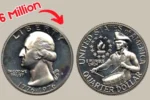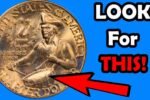The Rare Bicentennial Quarter Valued at $11 Million, Still in Circulation
Most people never give much thought to the change in their pockets. Quarters come and go every day in vending machines, stores, and parking meters. But what if one of those quarters could change your life forever?
There’s a story floating around in the coin collecting world about a rare Bicentennial Quarter valued at $11 million. Yes, you read that right—$11 million for a single 25-cent coin. While it sounds unbelievable, this coin is real, and it might still be out there in circulation. Could you be the one who finds it?
This article will walk you through everything you need to know about this mysterious and valuable coin, what makes it so special, and how to spot one if you’re lucky enough.
What Is a Bicentennial Quarter?
The Bicentennial Quarter was released in 1976 to celebrate the 200th anniversary of the United States of America. Instead of the usual eagle on the back, these quarters feature a drummer boy and a torch with 13 stars around it, representing the original colonies. The front still features George Washington.
These coins are marked with the dual date “1776–1976,” and they were minted in large numbers—hundreds of millions, in fact. So, most Bicentennial Quarters are only worth their face value or slightly more. However, a very small number were made with special features, errors, or rare materials—and that’s where things get interesting.
Overview Table – Rare Bicentennial Quarter Highlights
| Feature | Details |
|---|---|
| Year of Issue | 1976 |
| Commemorates | 200th Anniversary of U.S. Independence |
| Design Front | George Washington |
| Design Back | Drummer Boy with Torch and 13 Stars |
| Special Date Mark | 1776–1976 |
| Material (Common) | Copper-Nickel Clad |
| Material (Rare Version) | 90% Silver or Experimental Metal |
| Estimated Value (Common) | 25¢ to $5 |
| Estimated Value (Rare) | Up to $11 million |
| Mint Marks | “D” (Denver), “S” (San Francisco), No mark (Philly) |
Why Is One Worth $11 Million?
Most coin collectors agree that rarity, condition, and error features are what drive a coin’s value. The Bicentennial Quarter in question is rumored to have been part of a special test batch made from an experimental metal composition or struck using unique dies. It may have also been a special proof version with an extremely high level of detail and finish.
Additionally, some believe the coin was not supposed to be released into general circulation—but somehow it slipped out and is now floating around in the wild. That makes it one-of-a-kind or possibly one of only a few, turning it into the “holy grail” for coin hunters.
Combine that with perfect condition (no wear, scratches, or handling), and you have a coin that could be worth millions to the right buyer or collector.
Could It Be In Your Pocket?
You might think a coin this valuable would be locked in a museum, but that’s not always the case. Mistakes happen, and rare coins often find their way into circulation by accident. People don’t always recognize what they have, and sometimes, a valuable coin gets used to buy a soda or tossed into a jar.
That means there’s a real chance this $11 million Bicentennial Quarter could still be out there, maybe even in your change jar or wallet. So how do you find it?
Here are a few tips:
-
Look for the Drummer Boy on the back – Regular 1976 quarters have this design.
-
Check for sharp, detailed features – Rare versions may have ultra-clear text, smooth finishes, or deep cuts.
-
See if the coin looks different in color – A silver or unusual shine might suggest a different metal composition.
-
Check for mint errors – Misstrikes, double images, or off-center designs can be signs of rarity.
-
Weigh the coin – Rare versions may weigh slightly more or less than regular quarters.
FAQs – Frequently Asked Questions
1. Is every Bicentennial Quarter valuable?
No, most are only worth face value or a little more. Only specific rare versions, usually with mint errors or unusual metal, are highly valuable.
2. How can I tell if I have the $11 million quarter?
Look for unique features such as different metal color, proof-like finish, or odd characteristics. Getting it professionally appraised is the best way to know.
3. What should I do if I find a rare quarter?
Do not clean it. Store it safely and have it looked at by a professional coin grader or dealer. You might be sitting on a fortune.
4. Can I still find rare coins in regular change?
Yes, it’s rare but possible. Coin collectors often find valuable coins in circulation, especially from older batches.
5. Who would buy a coin for $11 million?
Wealthy collectors, museums, or private buyers who value rarity and history. Some people spend millions on unique coins, art, or collectibles.
Conclusion
The idea that a 25-cent coin could be worth $11 million may sound like a dream, but it’s a reminder that history and value can be hidden in plain sight. The rare Bicentennial Quarter is more than just a piece of change—it’s a treasure waiting to be discovered. While the chances are slim, they’re not zero. All it takes is a careful eye and a bit of luck.
So the next time you get some change, take a closer look. You never know—that one quarter might just be the key to your future fortune.



